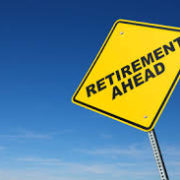Real Estate Investment – not that simple?
A large number of Australians have a diversified portfolio when they retire consisting of investments, including cash, shares and superannuation and in a substantial number of cases, an investment property.
During a person’s working life the investment property can provide a number of benefits including possible increases in the property’s value, a regular rental income stream and depending on the level of borrowings, a tax benefit via a common strategy called “negative gearing”.
I would like to discuss the treatment of an investment property under the Social Security Act, for the purposes of calculating a person’s age pension entitlement
A person’s age pension entitlement is based firstly on their age, and then on their assets and income.
For the purposes of this article, I will explain the assessment of the investment property under each test separately, starting with the assets test.
The investment property is an asset and the “net” value of the property adds to the total sum of all your assessable assets.
If you have borrowed money to purchase the investment property, and the borrowings have been secured by a mortgage against this property, the value of the investment property is reduced by the borrowings. For example, if the property is worth $500,000 and has an outstanding mortgage of $300,000, the net value of the property for the purposes of the asset test is $200,000.
However, if the borrowing of $300,000 is mortgaged against the age pensioner’s own primary residence – which is an exempt asset – then the value of the investment property is now $500,000 because the $300,000 has not been secured by a mortgage against the assessable asset – the investment property.
Even more confusing is the situation where the borrowings are mortgaged against both the age pensioner’s primary residence and an investment property. In this scenario, the borrowings are apportioned between the two properties based on the value of each. We know the investment property is worth $500,000, but if the pensioner’s residential home is worth $750,000, then only one-third of the $300,000 borrowing – i.e. $100,000 would be assessed as borrowings mortgaged against the investment property, reducing the value of the investment property to $400,000.
Now let us examine the treatment under the income test.
The assessment under the income test is a little easier to understand. The gross weekly rent being received is assessed as income. This income can be reduced by the expenses associated with the management and maintenance of the property. A good guide, if you have not completed a tax return is to maintain a deduction equivalent to one-third of the gross rent. A further deduction, which can be made from the net rent (after expenses) is the interest payable on the borrowings.
Interest paid on borrowings to purchase the investment property is a deduction from the rent, received regardless of which property the mortgage has been secured against. This is providing the purpose of the borrowed funds was to purchase the investment property.
At the beginning of this article I mentioned a tax strategy called “negative gearing”. This strategy allows for any losses incurred by your investment in the property to be used to reduce other taxable income.
This is not the situation under the Social Security Act. Any loss of the rent you are receiving may not be used to reduce the value of other income being assessed to establish your correct age pension entitlement.
Mark Teale | Centrepoint Alliance



